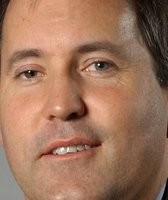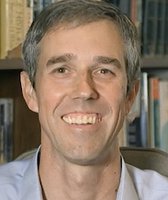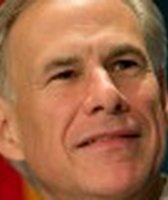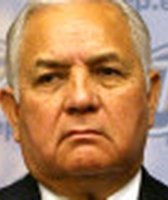Stand up for the facts!
Our only agenda is to publish the truth so you can be an informed participant in democracy.
We need your help.
I would like to contribute
Pro-Bachmann group says Texas spending has doubled under Rick Perry as governor
A group favoring U.S. Rep. Michele Bachmann of Minnesota for president posted an ad online this month suggesting Gov. Rick Perry, the leading hopeful for the Republican presidential nomination, isn’t a fiscal conservative.
In the spot, targeted at South Carolina voters, the narrator says Perry "doubled state spending in a decade."
That claim by the Keep Conservatives United super PAC immediately rang a bell with us. In August 2010, Texas Democratic gubernatorial nominee Bill White said the state budget had gone up over 80 percent under Perry, the governor since late 2000. We rated White’s statement Mostly True. Between 2000-01 and 2010-11, spending from all sources including federal and local aid increased nearly 79 percent, from nearly $101.8 billion to almost $182.2 billion.
Then again, we noted, there are ways to analyze the increase that whittle the growth percentage.
Adjusted for population growth and inflation, spending increased 18.2 percent over the period. Also, expenditures of state general revenue — the money most directly influenced by legislators and the governor — decreased by 4.5 percent, according to the state’s advisory Legislative Budget Board.
The pro-Bachmann group offers as backup for its claim data from two comprehensive annual financial reports issued by the Texas state comptroller’s office which account for state finances in accord with standards set by the Governmental Accounting Standards Board. Counting spending from general revenue (basically state tax dollars), special revenue (meaning income restricted to specific programs), capital projects and debt service, the reports show spending of nearly $45 billion in the fiscal year that ended Aug. 31, 2000, and $90.4 billion in the year that ended Aug. 31, 2010, — an increase of nearly 101 percent.
So, there’s a way to stake the "doubling" claim.
We wondered how spending looks based on the actual state budgets adopted on Perry’s watch.
At our inquiry, budget board staff provided revised figures for 2000 through 2010 and added information from the 2011 budget year and 2012-13 state budget that Perry signed into law in June. Interestingly, the 2000-01 and 2010-11 expenditures from all sources have changed since our 2010 fact check; the updated figures indicate an 86 percent increase in raw spending over the period, which drops to 22 percent if adjusted for population growth and inflation.
Between 2000 and 2010, the years singled out by the pro-Bachmann group, spending from all sources increased 86 percent, or 21 percent adjusted for inflation and population growth, according to the board’s figures. Spending from state general revenue rose 44 percent, though that was actually down 6 percent in 2010 from 2000 when adjusted for inflation and population growth — as noted in a Sept. 1, 2011, Perry campaign email challenging the ad.
When we delved into spending growth for our 2010 fact check, Dale Craymer, president of the Texas Taxpayers and Research Association, suggested that any comparison of the 2000-01 budget and the 2010-11 budget take into account two factors in the latter budget that weren't at play in 2000-01.
First, Perry and state lawmakers agreed several years ago to cover reductions in school property taxes with state revenue; that's costing $14 billion in the 2010-11 budget. Craymer said that commitment doesn't translate to an increase in government spending; it's a shift in which level of government is doing the spending. Second, the 2010-11 budget included about $12 billion in one-time federal stimulus aid. Remove the combined $26 billion out of the comparison and the state budget increase since 2000-01 falls to 53 percent.
In a recent follow-up interview, Craymer stuck with his 2010 caveats. He also cautioned against reaching conclusions based on the state’s annual financial reports which, he said, have to account for far more than actual spending in a fiscal year. He said the best source for comparisons of spending under any governor would be the state budgets they signed into law as tracked by the budget board.
In an interview, Billy Hamilton, the state’s former deputy comptroller, aired a similar view, noting that major debt decisions reflected in the financial reports were approved directly by voters in amendments to the state constitution. Those reach the ballot without the governor having a say.
Researcher Bob Harris, the pro-Bachmann group’s treasurer, told us in an interview: "I wanted to get the whole picture ... This was the comprehensive report."
R.J. DeSilva, spokesman for the comptroller’s office, said by email the report each year "aggregates the state's assets, liabilities, revenues and expenses and presents a broader accounting scope that includes more than the allocation of general revenue funds through the state's budgeting process. For example, accounting principles dictate the depreciation of
a state vehicle has to be shown as part of expenses in the (report), although it is non-cash activity which is not included in the budget process."
Asked to elaborate, DeSilva replied: "Another example would be higher-education spending of local funds (like tuition revenue). That spending is included in the (report), but it’s not part of
budget appropriations by the Legislature."
All told, we can see the appeal of using a financial report with "comprehensive" in its title. And
the financial reports, piling in all kinds of spending factors, seemingly back up the "doubling" claim.
However, we’re not convinced the reports are the best way to check spending under gubernatorial sway. It’s why we tend to hew to figures in the state’s budgets.
And according to the latest updates of budgeted spending, spending from all sources increased 86 percent over the years analyzed by the group, 21 percent once population growth and inflation are counted. Budgeted spending the governormost affected, of state general revenue, went up 44 percent, though that decreased 6 percent once inflation and population growth are weighed.
We rate the statement Mostly False.
Featured Fact-check
Our Sources
Emails, responses to PolitiFact Texas, R.J. DeSilva, Texas State Comptroller’s Office, Sept. 2 and 6, 2011
Legislative Budget Board, response to PolitiFact Texas, "TRENDS IN STATE GOVERNMENT EXPENDITURES, 2000-2013" (received Sept. 2, 2011)
Rick Perry for President, campaign press release (excerpted), "Bachmann Committee Attacks Gov. Perry's Fiscally Conservative Record," Sept. 1, 2011
Telephone interview, Dale Craymer, president, Texas Taxpayers and Research Association, Austin, Sept. 1, 2011
Telephone interview, Billy Hamilton, consultant, Austin, Sept. 2, 2011
Telephone interview, Bob Harris, treasurer, Keep Conservatives United, Raleigh, North Carolina, Sept. 2, 2011
Texas Comptroller of Public Accounts, "Texas Comprehensive Annual Report, Fiscal 2010," Feb. 28, 2011 (accessed Sept. 2, 2011)
Browse the Truth-O-Meter
More by W. Gardner Selby
Pro-Bachmann group says Texas spending has doubled under Rick Perry as governor
Support independent fact-checking.
Become a member!
In a world of wild talk and fake news, help us stand up for the facts.















































